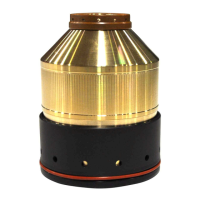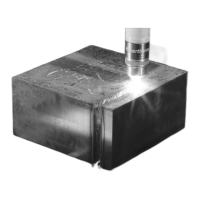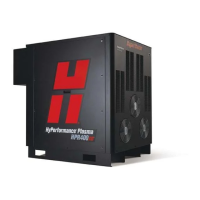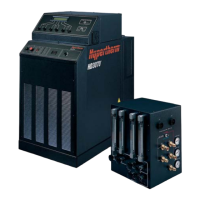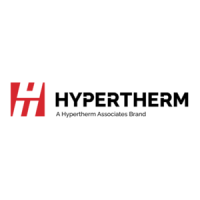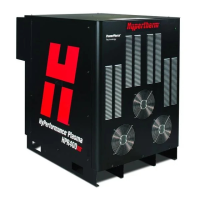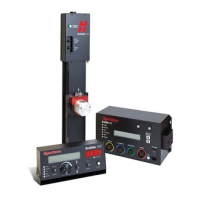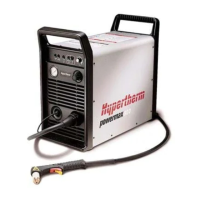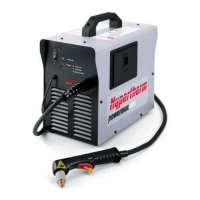0
HPR260 Manual Gas Instruction Manual b-1
III. Power-up
a. Processor boots in microprocessor mode and begins to execute code in external flash memory.
b. Limited initialization of digital-signal processing (DSP) hardware.
c. Calculate checksum on external flash and on DSP internal flash.
– If checksums don’t match, copy code in external flash to internal flash.
d. Jump to internal flash and start execution.
III. Initialization
a. Full initialization of DSP hardware.
b. Read EEPROM for previous current setpoint.
III. Main loop
a. Check for serial messages from the internal UART.
– If valid message is received, parse the message and take action.
b. Check for serial messages from the external UART.
– If valid message is received, parse the message and take action.
c. Check for CAN message.
– If CAN message has arrived, parse the message and take action.
d. Check for error conditions every 10 milliseconds.
e. Refresh data from gas console (i.e. pressures) every 250 milliseconds.
f. Update the chopper control loop every 26 microseconds.
g. If an error has occurred, take action.
h. Update analog inputs.
i. If current setpoint has changed, update the data in the EEPROM.
j. If inlet gases change, perform a purge cycle.
k. Descriptions of machine states
(Numbers listed below do not correspond to actual state numbers.)
1. Idle
• Outputs are off.
• Chopper setpoints = 0.
• 6-second delay for other processors to initialize.
Appendix B
FUNCTIONAL DESCRIPTION OF SOFTWARE
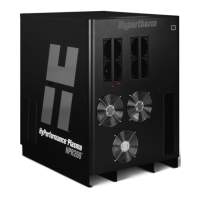
